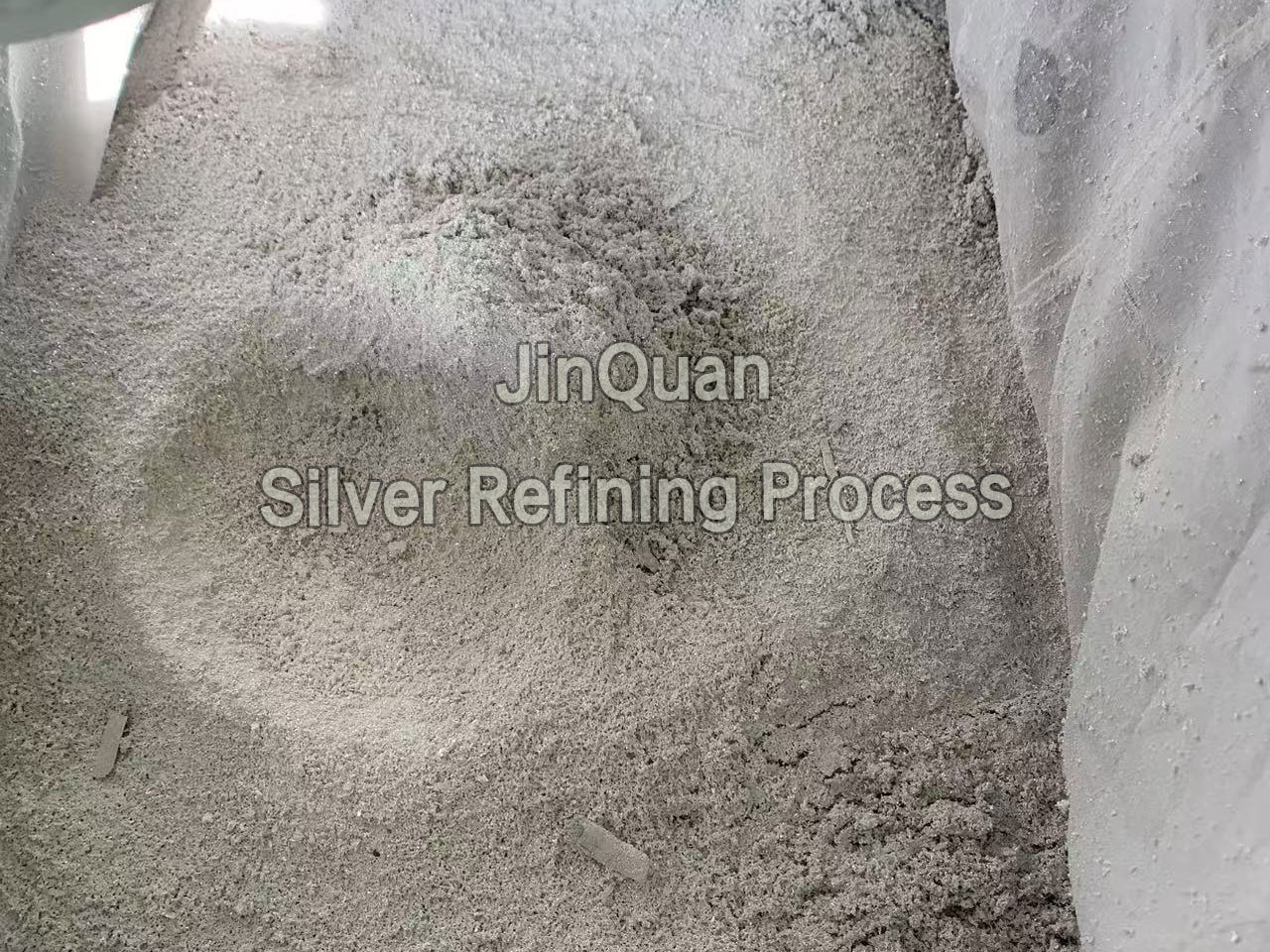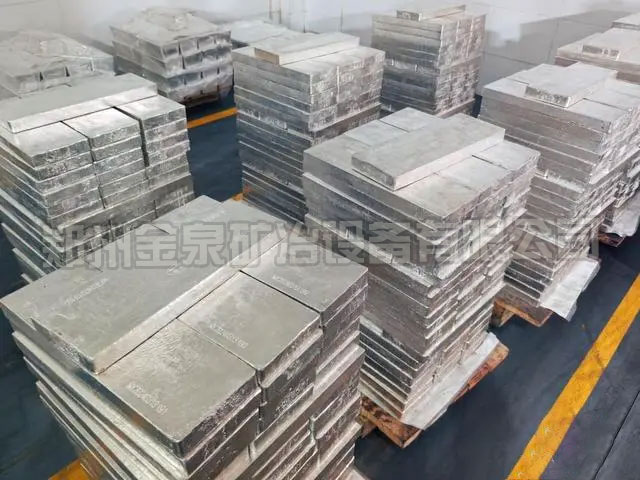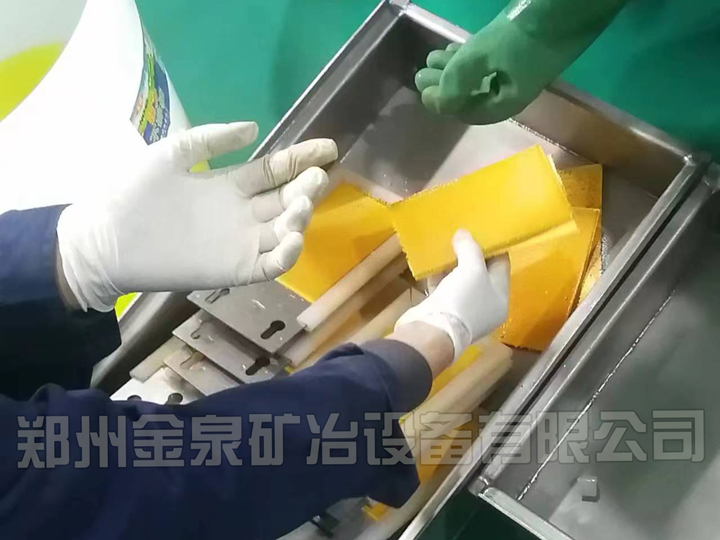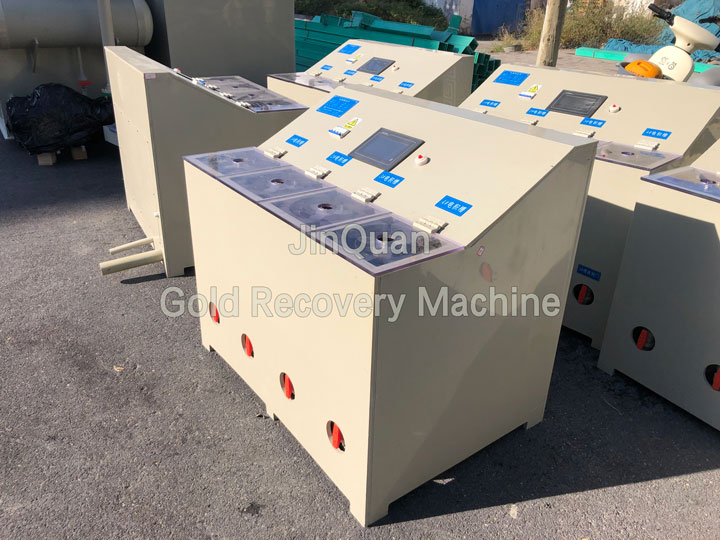-
 silver refining process
silver refining processThe refining process of silver:
This method, known as the sodium chloride precipitation method, is strictly speaking a technique used to recover silver from spent electrolytic solutions and does not constitute purification. The process involves using sodium chloride to react with silver nitrate and form sodium chloride precipitate, thereby separating silver from other impurities. Afterwards, the silver powder is reduced by reducing agents such as hydroxylamine, iron powder, and zinc powder into refined silver. Finally, the silver powder is reacted with nitric acid to generate nitrate solution for electrolysis. Many refining plants now adopt this method.
-
 High Current Density Silver Electrolytic Cells
High Current Density Silver Electrolytic CellsCharacteristics of High Current Density Silver Electrolytic Cells:
Any type of cell must be based on stable silver powder deposition quality and reliable operation safety. Notable features of high current density electrolytic cells include:
A. High current density allows fewer cycles per unit weight of the anode, accelerating capital turnover for enterprises.
B. The electrolyte flows in a parallel manner, with liquid moving from bottom to top and uniformly distributed across the cell, facilitating ion diffusion.
C. A large volume of electrolyte is circulated, enhancing ion diffusion speed and reducing concentration polarization.
D. Secure connections between cathodes, anodes, and outlets using bolts ensure good conductivity.
E. The number of cells in series is minimized to optimize efficiency.
-
 the horizontal electrolytic cell for silver powder
the horizontal electrolytic cell for silver powderDomestically, from the early Shenyang smelting plants to the large-scale copper and lead refining plants like Huayin Gold and Lead (with an annual white silver output exceeding 600 tons), practically all have adopted this cell configuration for white silver refining. Additionally, other facilities that use this type of cell include:
Australia's sole AGR Refining Plant and Johnson Matthey (Johnson Matthey) in the UK, among other major international precious metal refineries.
-
 electrolytic gold recovery and separation process
electrolytic gold recovery and separation processElectrolytic method for separating gold and silver:
Suitable for alloys with silver content above 75%, gold content between 0% to 25%, and other impurities minimal, this electrolytic separation method yields over 99.95% pure silver powder, while gold is collected into the anode bag, effectively achieving the separation of gold and silver.
-
 common methods for separating gold and silver
common methods for separating gold and silverCommon Methods for Separating Gold and Silver:
Chemical dissolution method: Gold can be dissolved in hydrochloric acid, while silver reacts with Cl⁻ ions to form a silver chloride precipitate during the dissolution process. After filtering, gold and silver are separated.
Aqua-regia solution method: Suitable for alloys with low silver content (silver typically below 10%), this method allows both gold and silver to dissolve. However, after dissolving, silver reacts with Cl⁻ ions to form a silverCommon Methods for Separating Gold and Silver chloride precipitate, enabling it to be separated from gold.
-
 chemical separation of gold and silver
chemical separation of gold and silverChemical separation of gold and silver:
Using a single acid, it cannot dissolve gold but can dissolve silver, achieving the separation of gold and silver. Hydrochloric acid or sulfuric acid is commonly used. This method is typically used for gold-silver alloys with a gold content below 30%, while silver, copper, iron, and zinc can be dissolved in hydrochloric acid or sulfuric acid, whereas gold cannot. After filtering and washing, it can obtain gold with over 98% purity. For lead-containing alloys, hydrochloric acid is used for dissolution
-
 extraction of gold from alloy gold
extraction of gold from alloy goldAlloy gold: Alloy gold produced by roasting mercury paste on a mercury plate, alloy gold produced by melting gold paste in a converter, alloy gold produced by melting gold paste after removing impurities with nitric acid, alloy gold obtained by pyrometallurgical or hydrometallurgical treatment of copper lead anode paste, and other alloy gold produced in other gold and silver mines and rare and precious plants for non-ferrous metallurgy.
The gold content is 40%~99.9%, and the silver content is 40%~99.9%.
-
 extraction of gold from gold mud
extraction of gold from gold mudExtraction of Gold From Gold Mud:
Gold mud and heavy sand: about 3% of heavy sand selected from equipment such as zinc powder replacement gold mud, gold loaded carbon analytical electrolysis gold mud, gold loaded carbon incineration ash, Nielsen or shaker.
Gold content 5%~40%, silver content 5%~40
-
 heating displacement method is used to recover gold
heating displacement method is used to recover goldCopper wire (or copper chips) heating displacement method is used to recover gold:
Cyanide-containing solutions generally employ the copper wire (or copper chips) heating displacement method to recover gold. Additionally, for high-gold content plating waste solution, electrolytic methods can be employed to recover gold.
For low-gold content solutions and rinse water, activated carbon adsorption and ion exchange adsorption methods are used to recover gold.







